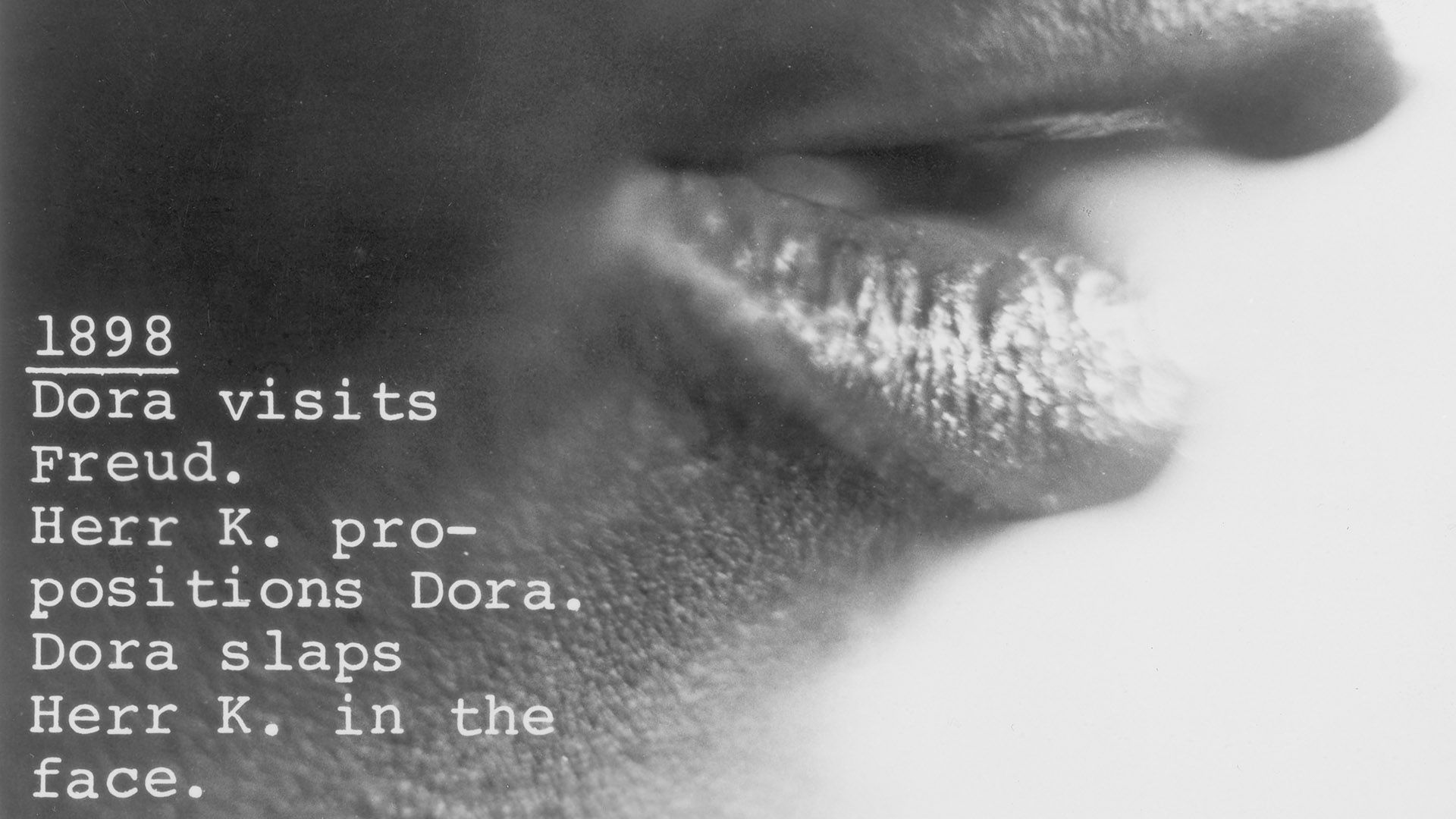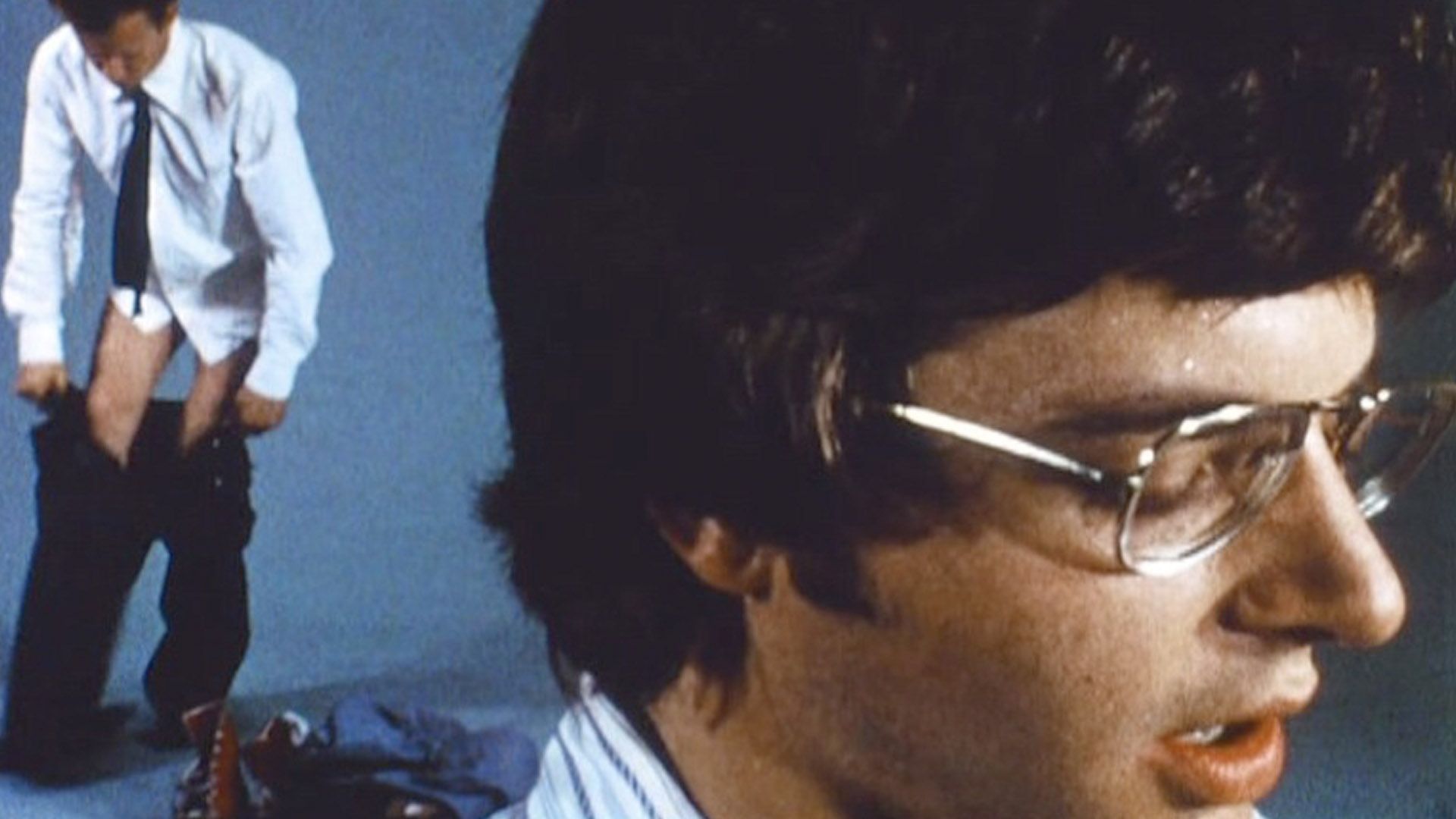ANTHONY MCCALL
PROGRAMME 1
Filmoteca de Galicia | Saturday June 3rd | 7:30 p.m. | Free entry to all venues until full capacity. It will not be possible to enter the venues after the screening has started.

SIGMUND FREUD’S DORA
Anthony McCall, Claire Pajaczkowska, Andrew Tyndall, Jane Weinstock, 1979, EE.UU., 16mm to digital, 50 min.
This key work of the late 1970s, now digitally restored, is a unique attempt to combine contemporary debates around formalism, feminism and psychoanalysis in film. Implicitly engaged in a critical dialogue with filmmakers like Yvonne Rainer and Jean-Luc Godard, as well as the theorists of Screen magazine, Sigmund Freud’s Dora is a milestone in the evolution of structuralist film strategies into broader questions of representation.

ARGUMENT
Anthony McCall, Andrew Tyndall, 1978, EE.UU.,16mm to digital, 70 min.
Three male voices dissect one edition of The New York Times through a series of locked-off shots, revealing the prejudice and latent content of news and advertisements, reading images as texts and presenting text as an image. Fashion photographs are used as a starting point for a political investigation of news, advertising, and images of masculinity – while at the same time, the filmmakers reflect on their own position and the possibility of radical film practice. Influenced by both the American and European avant-gardes, notably Godard and Hollis Frampton, Argument is stylistically beautiful and relentless in its enquiry.
ANTHONY MCCALL
THE EARLY YEARS
In the 21st century, the name of Anthony McCall has above all bounced around the sphere of the art world, with his installation work (and particularly his sculptures with light) earning him international fame. In that space between sculpture, installation and conceptual art occupied by McCall, cinema took on essential significance at the beginning of his career. Starting off with performance and artistic manifestations related to land art and sculpture, McCall ended up in cinema, at first in a utilitarian way, though he immediately began to deconstruct it and rethink it in a way that was to leave an indelible mark, especially in the area of expanded cinema. Indeed, many of the inventions in experimental cinema have arisen from the vision from people coming from other disciplines, since it is well known that the best way to analyse a subject is often from outside, with no personal or historical influences to cloud the vision of the matter by looking at it from too short a distance. In this vein, McCall, born in 1946 in St Paul’s Cray in south-east London, was in contact at the beginning of the 70s with the London Filmmakers Co-op. This was a group made up of people who came mainly from painting and other arts, and who were well known for being one of the most fruitful centres for avant-garde cinema creation in the 60s and 70s. It was in those years when he began to document some performances—events that he calls “conditions”—in cinema. Such is the case of Circulation Figures, Landscape for Fire and Landscape for White Squares, all from 1972. In Circulation Figures, a group of people is filmed photographing and filming a space, where in turn there is a mirror: one does not know what is real and what is a reflection. The fact that all of this is filmed gives yet another ontological twist to reflection on the world itself and its reflection mirrored, or made up of the lights and shadows of cinema and photography. Landscape for White Squares and Landscape for Fire are “conditions” carried out in the open air. In the former, a group of people with squares of white cloth in a kind of wasteland advance towards the camera, forming a diagonal line. Then they move away, showing a series of spatial relationships through the transparent spaces of created produced by the cloths on the film, which can be perfectly woven into the work with light that was to come later. Landscape for Fire records several different performances in which a group of people light fires and put them out; fires that are made in containers with gasoline arranged in a kind of grid, and which are put out and lit in keeping with a musical score. What was initially intended as documentation was later edited by McCall, transforming the performers’ patterns of movement and even turning some shots upside down, changing their orientation and the direction of the movements.
In 1973 he moved to New York, which is where the phase of his career we are focusing on in this programme began, covering some of his most important works from the 70s: those that can be considered films as such, and those that begin to broaden the idea of what a movie is and what a movie theatre is.
The closing programme, number 2, is based on what was to be his foundational and most famous work, Line Describing a Cone, which he presented in 1973 shortly after arriving in New York. It also includes some of his first “solid light” works conceived on celluloid in the 70s in a mise-en-scène especially designed for this festival. In this piece, McCall establishes a modus operandi that he would later adapt in various variations, expanding and drawing diagonals over the same concept. Graphically, the film consists of an animation on an opaque black background, upon which a white circle slowly forms. With the help of smoke in the room, the focus is no longer primarily on the screen, but on the beam of light from the projector. Thanks to the smoke, the animation of the white circle gradually forms a dense cone of light. Another important aspect of this piece is its relationship with the spectators. Although the audience are watching in a dark space, there are no chairs, and the idea is for them to move freely around the space and interact with the light cone. It is not an installation, which would often be the case later in his work. It is a piece that lasts for a specific duration and which must be experienced, thus hybridising cinema with the exhibition hall. Conical Solid (1974) and Four Projected Movements (1975), along with Line Describing a Cone 2.0 (a digital version from 2010 that was to dialogue with the celluloid version) will be taking over the hall’s space, showing some of these seminal works that focus attention on the previously unexplored possibilities of the primal component of cinema: a beam of light projected as such. It is a conceptual line of his work that would later produce works (which McCall will address in his master class) such as Long Film For Ambient Light (1975), an installation where the film is simply the light projected by the windows of a room during the day, and at night a bulb hanging from the ceiling. McCall thus completely dispenses with the film and the projector (as Tony Conrad also did in those years with his Yellow Movies, for example) maintaining only the light and the duration, and thereby thinking about cinema from a new angle.
In addition to the minimalist, profoundly reflective, ingenious and undoubtedly cinematic-plastic work that these artworks represent, we are also showing another, quite different facet of his early years in the form of two jointly-made films from the 70s: Argument, made together with Andrew Tyndall in 1978, and Sigmund Freud’s Dora, created with Claire Pajaczkowska, Andrew Tyndall and Jane Weinstock in 1979. These are films with a dense use of text, both spoken and on the screen, of advertising images (still and moving), pornography and various experimental mises-en-scène, variegated films packed profusely with theoretical implications related to the mass media, cinema, psychoanalysis, capitalism and various matters of sexuality and gender. In the former, Argument, we are talking about a film whose “theme” is men’s fashion (and therefore, masculinity); a theme intertwined with the role of the artist in cinema, with how images are generated, with imperialism, media manipulation and the forming of public opinion. Observation of pictures from fashion magazines, and the clash between the spoken text and the written text in the film (at times complementing and contradicting each other, and at others creating an overwhelming bombardment), make up the film’s primary material, along with sections of pure spoken text like a Greek chorus on a blank screen. For its part, Sigmund Freud’s Dora, which is based on work with a reading group on language and psychoanalysis, adds a twist to a case study by Freud—the patient he called Dora—in order to talk about women’s sexuality and the phallocentric vision there is of that sexuality, and about the intervention of psychoanalysis as a capitalist weapon. All of this is done by means of the mise-en-scène, which evokes the conversations between psychiatrist and patient, advertising images and pornography, and the subsequent appearance of the mother, who is brushed off by the psychoanalyst.
Finally, the programme we are presenting here is rounded off with a master class in which McCall will tell the story of his career, addressing more works and accounting for his lines of research after he returned to the world of art at the beginning of the millennium.
Elena Duque
